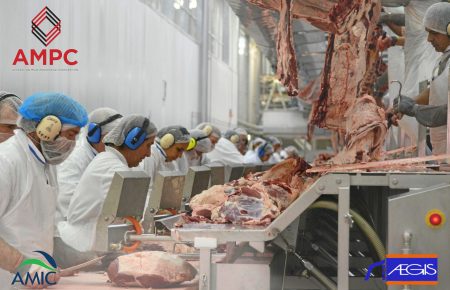By Simon Booth
“The RTW Coordinator must work with managers and supervisors to ensure that they are focused on achieving a successful return to work outcome regardless of their personal feelings regarding the claimant or the claim itself.”
– Aegis Risk Management Services’ ‘Workplace Injury Management Manual’
Over the past few years, in many states, there have been significant shifts in the management of Workers’ Compensation claims caused by Regulatory changes (icare & EML – NSW) and independent reviews (Victorian Ombudsman’s Report). These changes have led to increasing frustrations for employers and added pressure and scrutiny for the Return to Work Coordinators charged with achieving return to work outcomes.
A major change I have noted during this period is a shift towards an aggressive and antagonistic approach to injury management and return to work. This shift is one born of pressure and frustration and is detrimental to the overall goal of return to work.
Many return to work coordinators appear to have forgotten that their personal feelings regarding the claim or the claimant are irrelevant. The return to work coordinator’s role is to work with the company, the supervisors and the injured worker to achieve a safe and sustainable return to work.
The best way for the return to work coordinator to achieve this is to remain impartial. They should mediate between the parties and not get involved in disputes to ensure that they are not seen to be taking sides. If a return to work coordinator is perceived to be taking sides, why would the injured worker trust that they are truly interested in getting them back to work? Why would the injured worker trust that the return to work coordinator had their best interest at heart?
“The Return to Work (RTW) Coordinator must have a non-adversarial, empathetic, proactive, consultative, solution focussed approach to injury management, aimed at achieving a safe and sustainable return to work for all injured workers injured at work”
– Aegis Risk Management Services’ ‘Workplace Injury Management Manual’
Some of the keywords we use when assisting return to work coordinators in improving their approach to, and results in the Return to Work space are:
- Non-adversarial
- Empathetic
- Proactive
- Consultative
- Solution focused
Approaching return to work with this in mind increases your ability to successfully engage with your injured workers, and as a result increases the likelihood of getting them back to work.
Our results are getting worse
I quote Alex Collie’s article all the time: between 1998 and 2013, we made no progress in our return to work outcomes. Why? We haven’t changed our approaches, we’re not doing anything new, and we’re not being innovative.
Though achieving status quo in return to work in a period where there was a 26 per cent reduction in serious workplace injuries is not ideal, at least at this point we weren’t getting any worse.
Unfortunately, the latest stats from Safe Work Australia identify that our claims’ durations have increased by 32 per cent and our claims costs have increased by 39 per cent.
So what changed between 2013 and the latest data?
Just for the moment, let us put aside the less than ideal changes made by some of the regulators in recent times. Now let us focus on what we as employers can control. With these two thoughts in mind, I believe that we can relate the recent deterioration in return to work outcomes to our failure to effectively engage our injured workers. The part of the process most within our control.
How can we improve outcomes with injured workers?
1. Early intervention
Get involved and take action immediately. Don’t leave it up to your insurer/agent to manage the process and don’t just let the claims process just run its path. Start talking to the injured worker about return to work from day one. If the injury is not too serious, engage the doctor or the physio immediately and let them know that there are suitable duties available. This way they can be at the doctor day one and back in the workplace day two.
2. Engage with the worker
It’s surprising how often we come across situations where an injured worker is off work and there has been no contact from the employer.
I had an employer that called me because someone had lodged a stress claim. The injured worker had written an 18-page letter outlining all of the issues and the employer admitted that there was likely some credence to the complaint.
Two weeks later, outside of a very official letter the owner had sent the injured worker, nobody from the company had called the injured worker to see how they were, to discuss the process and what they were doing to investigate the situation, to identify a role at an alternate site during this process. What the injured worker received was silence.
So, from the injured worker’s perspective, I’m stressed, I’m being bullied and your response is to send me a letter that looks like it’s been drafted by a lawyer. Not a great way to engage the injured worker. Not a great way to make them feel supported, not a great way to make them feel like a valued member of your organization.
But a great way to make them feel isolated, unsupported and unwanted.
3. Find something for them to do
This is not rocket science; we know that being off work has a adverse impact on both physical and mental wellbeing and that these factors can have a significant impact on the likelihood of a successful return to work.
The Australian and New Zealand Consensuses Statement on the Health Benefits of Work (2011) states that “Work absence tends to perpetuate itself: that is, the longer someone is off work, the less likely they become ever to return.”

So find the injured worker something to do, let it have value, let it mean something, but get them back into the workplace, because we know that if they are sitting at home, they are going to get worse.
We know that if an injured worker is off for 45 days, your chance of return to work is 50 per cent.
If all else fails, find what I call the ‘Iron Lung’ duty. The job that is so light it would be hard (but not impossible) for a GP to keep a straight face whilst telling you the injured worker isn’t capable of performing the role.
For one of my major retail clients, this role is bag checker. You know, the person that stops you as you are about to leave the store and asks you to open your bag and show them your receipt.
No manual handling whatsoever (they don’t touch the bags) and able to sit and stand as required. The only real requirement to be able to perform the role is an ability to speak English and be polite and courteous to customers.
Do everything you can to avoid ending up in a position where a coin toss has just as much chance of predicting an eventual return to work.
4. Make life easy for their doctor
The easier you make the doctor’s life, the more likely they are to want to work with you.
Start by understanding that the doctor doesn’t get paid as much to see your injured worker as they do to see a person with a cold. Then understand that due to the process, your injured worker is probably taking up significantly more of their time than the person with the cold.
In line with point 3 above, develop a list of duties that you can send to the doctor outlining what is available for a return to work. Make it easy with some tick boxes and a place for the doctor to sign.
Keep your communication with them concise and to the point and focus on the benefits of return to work for the injured worker.
Don’t argue the merits of their treatment plan with them. Be supportive and facilitate all requests through to the Insurer/Agent. Let the agent decline any treatment requests.
Ask their opinion; get them to identify the barriers to return to work and commit to trying to overcome these barriers.
5. Offer to help
If someone is seriously injured you will be surprised at how far offering to help them and their family will go towards achieving a positive outcome.
Earlier this year a client had a worker from regional Victoria severely injured in a road accident. With our assistance our client arranged for the injured worker’s family to be transported to Melbourne and put up in hotel so they could be near the worker.
The injured worker and their family have expressed their gratitude for this support on numerous occasions.
6. Keep the worker engaged at all times
Keep the worker engaged. It doesn’t matter how well we engage the injured worker at the beginning if we forget about them later on. It is important to keep them engaged all the way through the claim. We do this by going back to our core principles and showing empathy and care. And if we focus on those things, it’s amazing the response you’ll get from people.
Set a reminder to make regular contact with the injured worker. Schedule return to work discussions at the workplace. Invite the injured worker in for any social events; work BBQs, Christmas parties.
Do everything you can to make them feel like they are still a valued part of the organisation.
Handling issues with compliance
When I talk to people about the above, I generally get a response along the lines of “That’s all well and good but what happens when the injured worker is being non-compliant?”
This is a good point — despite the best efforts and intentions of employers there is a small percentage of claimants who do not want to return to work.
My question is, does this really change anything for the return to work coordinator or the employer that they represent?
Surely we should still offer suitable duties. Surely we should still be looking at what barriers internally are stopping a person getting back to work. Surely we should still be providing options for the person to return to work.
Compliance Management is not the return to work coordinator’s job! It’s your insurer/agent’s job. They are the only stakeholder who can make the determination as to whether an injured worker is being non-compliant.
The return to work coordinator’s job is to be proactive, be consultative and be solution-focused. If the return to work coordinator forgets this and they stop meeting the employer’s obligations, we can no longer expect an injured worker to meet theirs.
If the employer withdraws suitable duties, how can we reasonably expect the injured worker to return to work? If we stop scheduling return to work meetings and contacting the injured worker, how is the injured worker able to meet their obligations to engage in the return to work process?
How can the insurer enforce non-compliance by the injured worker if, as the return to work coordinator you are not meeting the obligations of the employer (which in most circumstances, if done correctly, set the parameters of compliance for the injured worker)?
Summary
Key points to remember in relation to engaging with injured workers are:
- Employers should demonstrate empathy and care in their interactions with injured workers at all times.
- Return to Work Coordinators should have a non-adversarial, empathetic, proactive, consultative, solution focused approach to injury management.
- Get involved with the injured worker immediately — take action.
- An adversarial approach to injured workers by employers will garner an adversarial response.
- How the key stakeholders in the Workers’ Compensation system view an employer’s attitude to the injured workers will drive how much they are prepared to assist the employer.
Disclaimer: This article provides general advice and should not be considered legal advice or an insurance consultation. You should seek appropriate counsel for your own situation. In addition, this post is directed at people in Australia. If you are outside Australia, please be aware that the circumstances in your own country may be different.























































